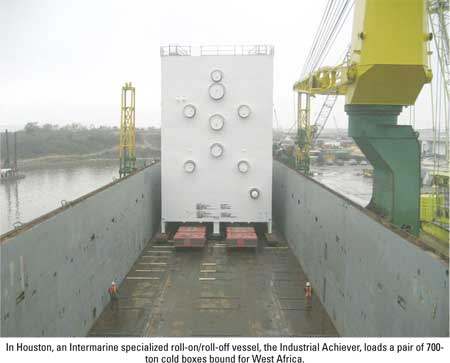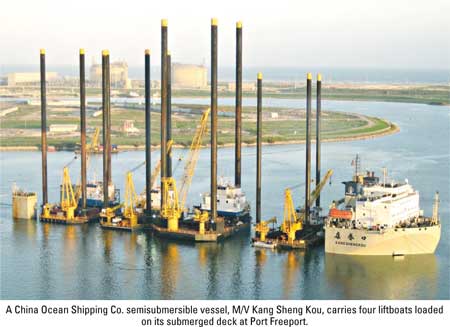By Paul Scott Abbott, AJOTThe Houston area remains the hub for U.S. project cargo moves, but it could be a year or more before such activity rebounds to the level it had enjoyed prior to the present economic downturn.
Looking from his office window out over a paucity of project cargo activity on the Houston Ship Channel, where public and private docks traditionally combine to move 60 percent of all U.S. project cargos, Ricky Kunz, the Port of Houston Authority’s vice president of origination, said, “The status of project cargo here at the Port of Houston is slow, very slow.”
Asked when he anticipates a project cargo rebound, Kunz replied, “Six to 12 months, beyond even as many as 18 months, before it starts to return.”
Kunz is not alone in his view, as several other leaders in the project segment shared similar sentiments this month with the
American Journal of Transportation.Almost all of the project moves taking place today are completing contracts signed well prior to the global fiscal meltdown. While this lag effect, typical of the project market, has meant the decline in volume for project cargo began later than it did for containerized goods, it also means recovery for the sector won’t be realized until several months later than it is likely to be for boxes.

“There’s still some reluctance to move forward with those projects that have been shelved,” Kunz said. “What we’re seeing now are the remnants of those projects that are being completed.”
Financing challenges remain the primary impediment to new contracts for moving wind energy components, electrical transformers, oil- and gas-related equipment and other projects.
Oil well supplies, or OWS, could begin moving again at a more frequent pace if the price of oil continues to rise, and the Houston area, being at the epicenter of the petrochemical industry, could be expected to benefit accordingly, according to Kunz.
But one indicator that points to a slow recovery for projects is the dramatic dropoff in imports of steel, which often is used in the making of the heavy, oversized equipment units that then become project cargo exports.
Houston steel imports in 2009 of 2.5 million tons represented significantly less than half the 6 million tons of steel imported into Houston in 2008, according to Kunz.
Jerry Nagel, president and chief executive officer of Houston-based Rickmers-Linie (America) Inc., said that, while project activity “is falling off just like everything else,” with imports down markedly, there has been “a little bit of an uptick in export activity to various parts of the world.”
This trend, which Nagel termed a “back-handed positive” associated with the low relative value of the U.S. dollar, has meant a slight increase in the volume of steel, oilfield equipment and various fabricated materials moving out of Houston.
“Houston is the project cargo capital and will continue to be,” Nagel said, adding that the lag effect from few new contracts being signed during the economic downturn could result in it taking years for the project market in Houston and elsewhere to recover.
Reiner Wiederkehr, deputy chief executive officer in the Houston office of Basel, Switzerland-based Fracht Freight World Organization Inc., which specializes in moving transformers into the United States from throughout the world for Siemens and others, commented, “This year, we’ll try and survive.”
The Fracht firm moved 70 to 80 such transformers in 2007, then between 100 and 120 units in 2008, before seeing that figure plummet in 2009 to between 60 and 70 – a number Wiederkehr is hoping to see equaled in 2010.

Andre Grikitis, president and chief executive officer of Intermarine LLC, said he does not see a rapid rebound for the pr



